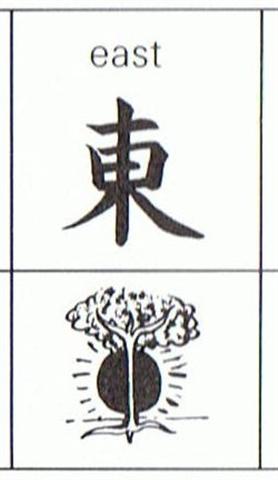1. The equality between the number of days from Ana-roto to Ana-muri on one hand and the number of glyphs on the front side of the G text on the other serves as circumstantial evidence for my hypothesis that each glyph on the G tablet stands for a day - at least I assume this to be so for side a:
My star time structure does not show in which order the stars are rising, instead they show in which order Sun will 'visit' them. Ana-mua (Antares) rises before Arcturus, but Sun will come earlier to Arcturus than to Ana-mua. The distances between the stars are facts, but the actual pattern of day numbers at the stars is only my provisional conjecture, which I have chosen because the numbers seem to be meaningful, as if the result of a careful choice. Day number 290 at 'the stern of the Sun canoe' is an example (10 months in conjunction with the dark night of the month should mean the end of the season of Sun). 06h 46m is the rectascension of Sirus today, and 6 * 60 + 46 = 406 minutes is 406 / 1440 = 28.194 % of the cycle - equal to day number 0.28194 * 365 = 103 counted from spring equinox north of the equator:
The position of Sirius is 11 days beyond summer solstice north of the equator and 4 days beyond winter solstice south of the equator. Around 4 * 72 = 300 years ago Sirius would have been at winter solstice as observed from Easter Island. Its Easter island name Te Pou (the post) agrees with Sirius being at the pole of the south. The declination of Sirius is -16º 39'. The Babylonian zodiac (as reconstructed in the picture below, and copied from www.solaria-publications.com) has Arrow (Sirius) with its perching Sun bird standing low, and at a position which is earlier than today. With precession turning the sky roof clockwise a full cycle in about 26,000 years we can conclude the picture shows the view around 45 / 360 * 26,000 = ca 3,250 years ago (when the Babylonian culture was flourishing):
South of the equator Sirius would have been halfway between autumn equinox and winter solstice instead of halfway between spring equinox and summer solstice, and around 6,500 years ago Sirius would have been around autumn equinox south of the equator, i.e. around day number 266 counted from winter solstice. Gb2-10 is glyph number 266 and the first idea which comes to mind is to associate it with autumn equinox. Number 26 was probably as a sign for Sun, and beyond day number 10 * 26 it could have been imagined that the 4th quarter of the year would come to cover earth by its 'dark cloth'. Feather signs behind a tree-like form could in Gb2-11 illustrate how Sun is hiding himself. The sign would not mean Sun was on his way to rise - as in the Chinese character for east (cfr at Te Pito) - because when it is spring north of the equator it is autumn south of the equator:
 Also, Sun is low (an infant) in the Chinese character for east, but high behind the top (old) in Gb2-11, and the sign behind which Sun is hidden is vero (a spear) - i.e. ragi without any light crescent, cfr at Vero.
However, other possibilities cannot be ruled out. Let us take an example. My day number 325 is 40 days before Alphard (α Hydrae), which could be the first day of the halfyear beginning after winter solstice:
An ancient view of the sky roof, dating from around (4 + 40) * 72 = ca 3,200 years ago - i.e. the same as for the Babylonian zodiac above - could have 'frozen' the zodiac in the sky roof and then been preserved on Easter Island. If in such an old zodiac structure Alphard was day number 1, then Sirius would have been 40 days before winter solstice at that time. And if such was the case, then the day number for autumn equinox could have been regarded - by the creator of the G text - as number 222 (= 266 - 44):
Possibly more than one time perspective was used in the G text. However, instead of spending more of our precious time discussing autumn equinox we will now change our pursuit and search for summer solstice. |
|||||||||||||||||||||||||||||||||||||||||||||||||||||||||||||||||||||||||||||||||||||||||||||||||||||||||||||||||||||||||||||||||||||||||||||||||||||||||











